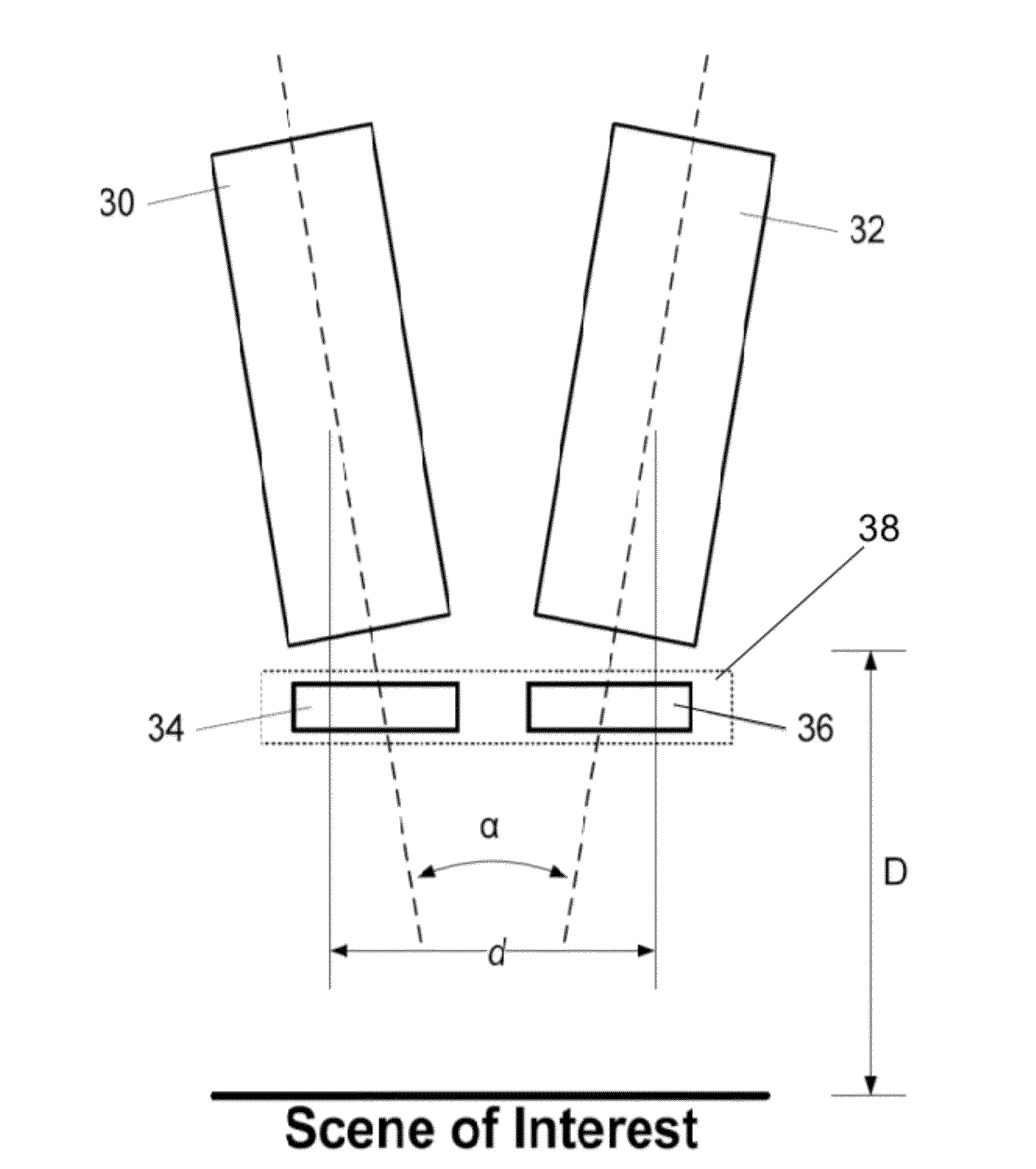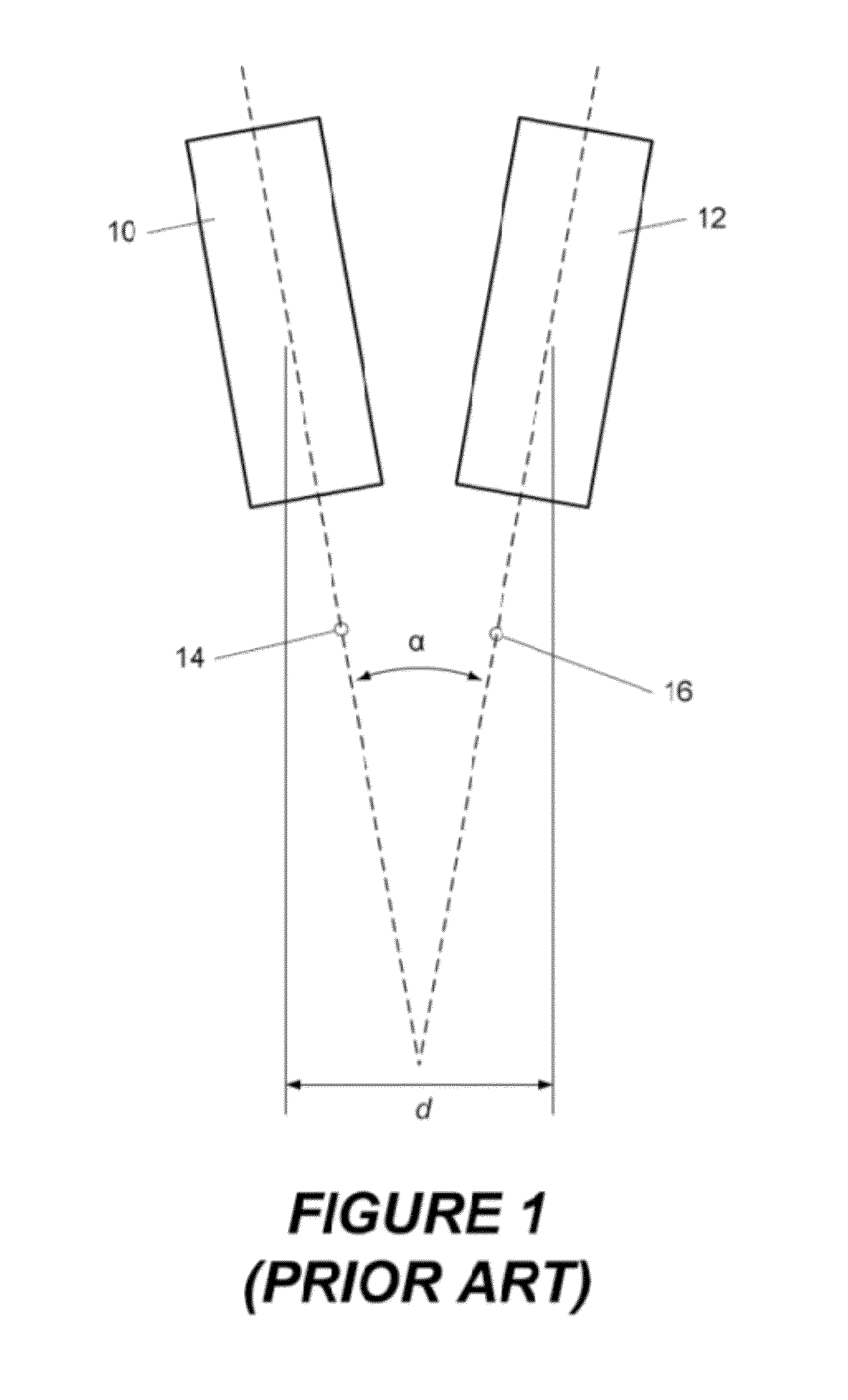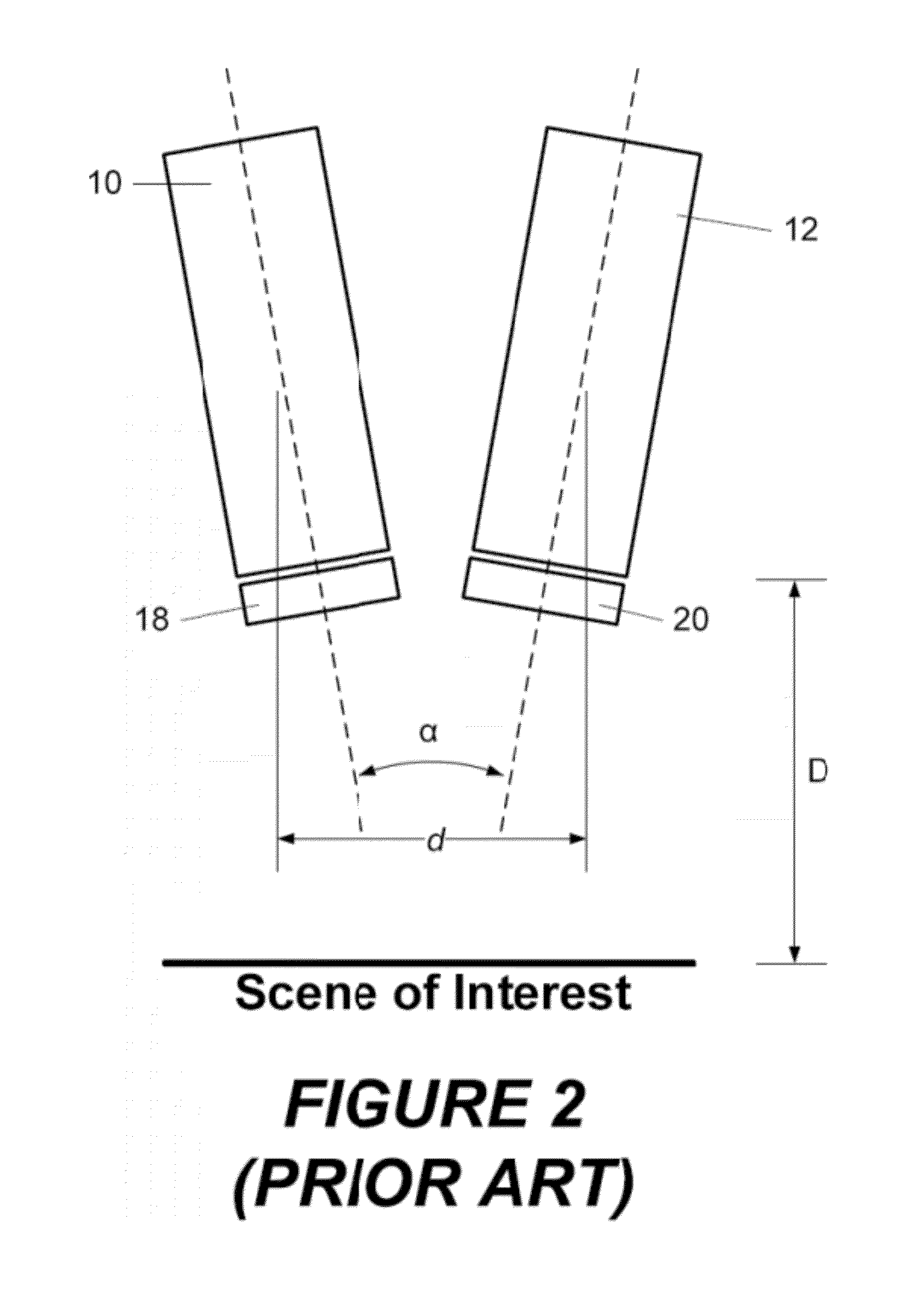Motionless adaptive stereoscopic scene capture with tuneable liquid crystal lenses and stereoscopic auto-focusing methods
a stereoscopic scene and auto-focusing technology, applied in the field of digital imaging systems, can solve the problems of difficult time-synchronization between multiple mechanical drive arrangements for optical element displacement, mechanical focusing devices, and unsuitable for many applications, and achieve the effect of efficient control of the movement of the focus
- Summary
- Abstract
- Description
- Claims
- Application Information
AI Technical Summary
Benefits of technology
Problems solved by technology
Method used
Image
Examples
Embodiment Construction
[0048]Stereoscopic imaging a 3D scene depends upon the acquisition system and the display system. The following three parameters are important:[0049]1) Angular magnification (at the point of view):
Ma=angular extent of the displayed scene / angular extent of the recorded scene[0050]2) Pupil distance magnification (from multiple points of view):
Me=pupil separation of the viewer's eyes / pupil separation d of the two cameras[0051]3) Apparent distance of the infinite object plane: Z'inf.
[0052]Changing these parameters can change the displayed space: angular magnification (lateral magnification) and pupil distance magnification (depth magnification) can change. If Ma=1, Me=1, Z'inf=infinity, then the world is reproduced as it is. Depth reproduction will be non-linear if Z'inf is not (effectively) infinity (see examples below).
[0053]Unlike viewer's eyes, display systems are generally fixed focus, in the sense that, a 3D video display always presents its images in the plane of the display. Clo...
PUM
 Login to View More
Login to View More Abstract
Description
Claims
Application Information
 Login to View More
Login to View More - R&D
- Intellectual Property
- Life Sciences
- Materials
- Tech Scout
- Unparalleled Data Quality
- Higher Quality Content
- 60% Fewer Hallucinations
Browse by: Latest US Patents, China's latest patents, Technical Efficacy Thesaurus, Application Domain, Technology Topic, Popular Technical Reports.
© 2025 PatSnap. All rights reserved.Legal|Privacy policy|Modern Slavery Act Transparency Statement|Sitemap|About US| Contact US: help@patsnap.com



